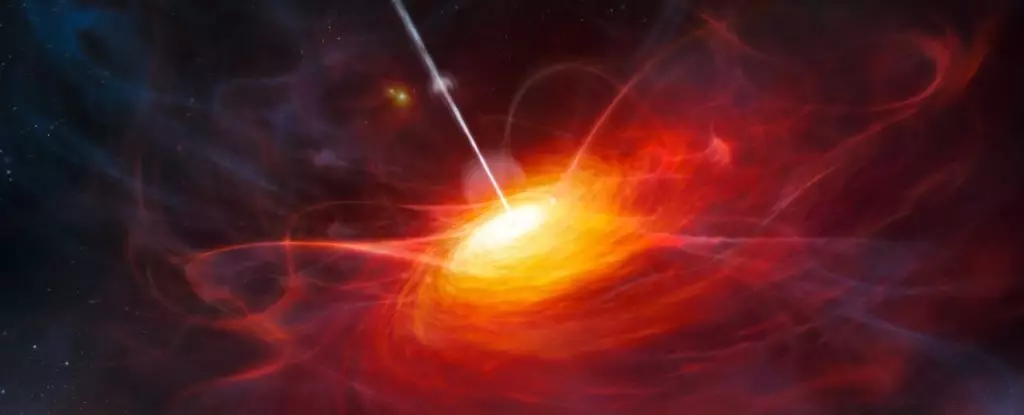The recent revelation of a colossal black hole entrenched in the Cosmic Dawn has left astronomers scratching their heads. Nestled at the core of a galaxy named J1120+0641, this cosmic behemoth boasts a mass exceeding that of over a billion suns. While larger black holes abound in the present-day cosmos, the sheer enormity of J1120+0641 poses a conundrum due to its timely emergence. Emerging less than 770 million years following the Big Bang, the rapid accumulation of mass by this black hole raises questions about its origins. Despite being a subject of study for more than a decade, the observations using the James Webb Space Telescope (JWST) have debunked previous theories surrounding its formation, leaving room for more exotic explanations for its weighty presence.
The discovery of J1120+0641 back in 2011 marked a significant milestone, with the galaxy initially identified as the most distant known quasar. Over the years, the galaxy stood out as an anomaly, with the possibility of supermassive black holes in quasar galaxies undergoing super-Eddington accretion still under consideration. Quasar galaxies are home to central supermassive black holes that voraciously consume surrounding gas and dust, emitting intense radiation in the process. However, the limitations imposed by the Eddington limit delineate the maximum rate at which a black hole can feed before radiation pressure counteracts gravitational pull. While super-Eddington accretion offers a plausible rationale for the massive black holes like J1120+0641, it requires meticulous analysis of galaxy light to uncover telltale signs of extreme processes to solidify its validity.
To probe the enigmatic properties of J1120+0641 and other colossal black holes, astronomers leveraged the JWST’s unparalleled capabilities for peering into the cosmos. In a groundbreaking observation conducted in early 2023, a team led by astronomer Sarah Bosman delved into the light signatures of the galaxy to unravel its inner workings. The analysis unveiled a sprawling torus of dust enveloping the black hole, alongside a luminous disk spiraling around to fuel its insatiable appetite. Contrary to expectations, the study unveiled that the black hole was engrossing material at a relatively standard pace, dispelling the notion of super-Eddington accretion. This finding challenges previous assumptions and underscores the complexity surrounding the growth of massive black holes during the universe’s infancy.
The absence of additional dust in J1120+0641 reinforces the notion that the black hole operates within normal parameters, despite its mammoth size. The prevailing theory posits that these colossal black holes may have originated from substantial ‘seeds’ rather than evolving gradually from smaller counterparts. This paradigm shift suggests that the colossal black holes emerged from the collapse of matter clusters or immense stars, jumpstarting their growth in the early universe. As astronomers continue to unearth more of these cosmic giants enshrouded in the mists of the universe’s dawn, this hypothesis gains credence as a compelling explanation of this mysterious epoch in cosmic history.
The unveiling of massive black holes in the Cosmic Dawn poses a profound scientific conundrum that challenges our understanding of the universe’s early evolution. The enigmatic nature of J1120+0641 and its counterparts underscores the need for continued exploration and observation to unravel the mysteries lurking within the depths of space and time. This cosmic puzzle invites astronomers and researchers to push the boundaries of knowledge to shed light on the origins and growth of black holes that have been silently shaping the cosmos since time immemorial.


Leave a Reply